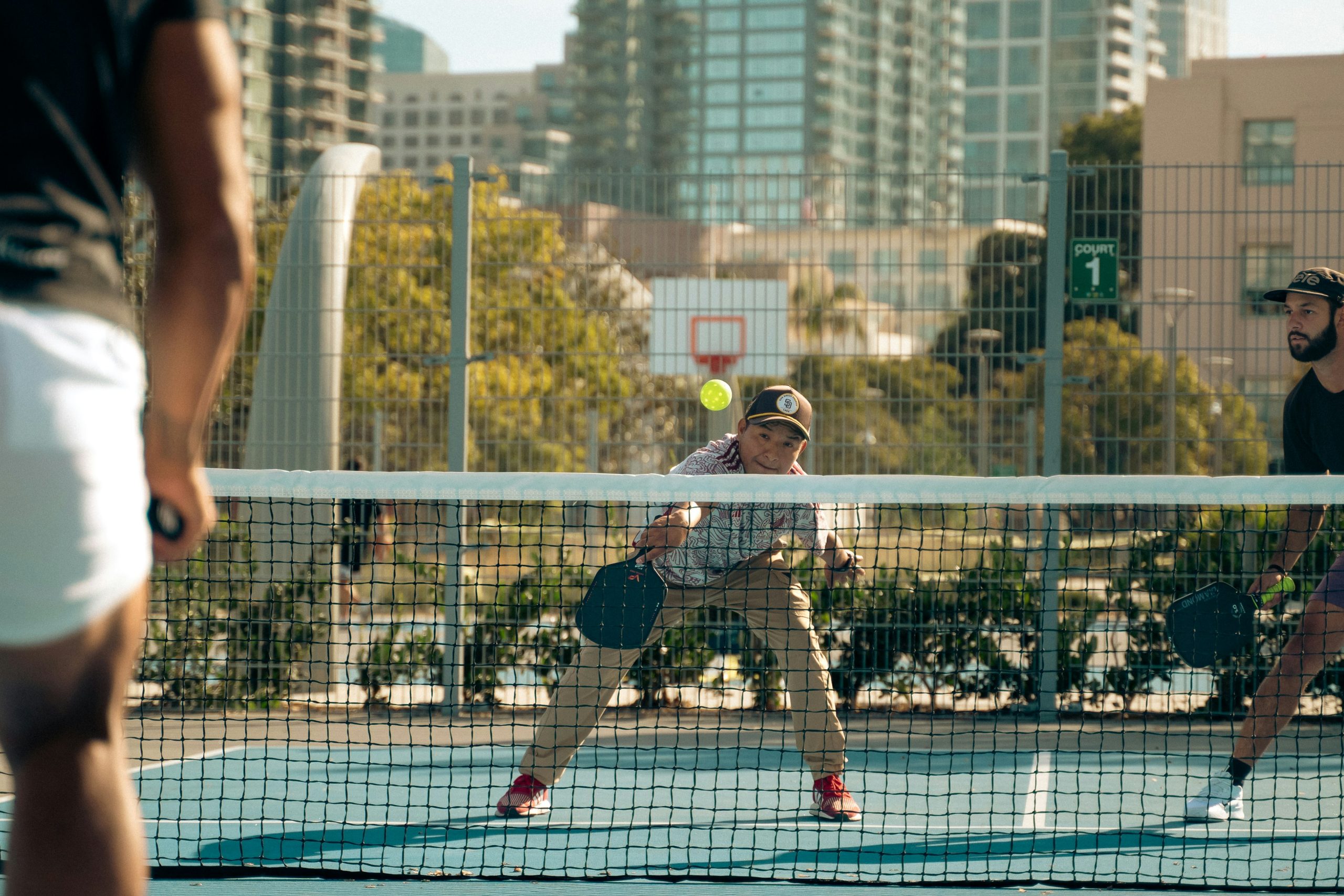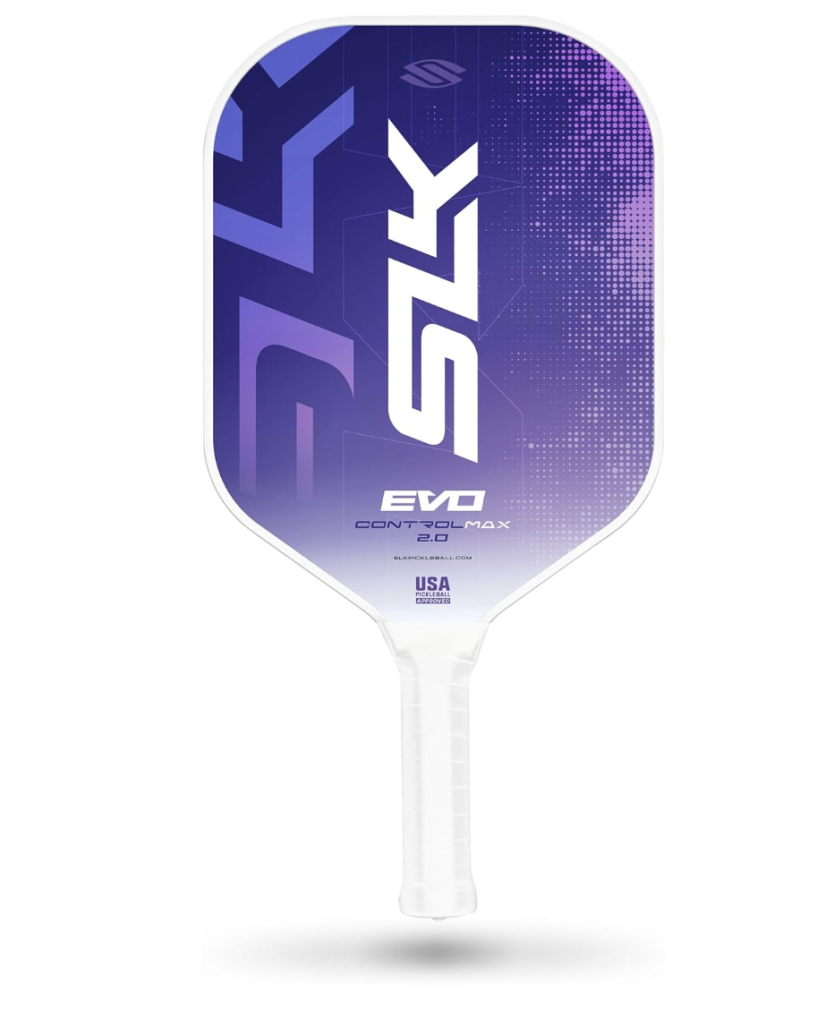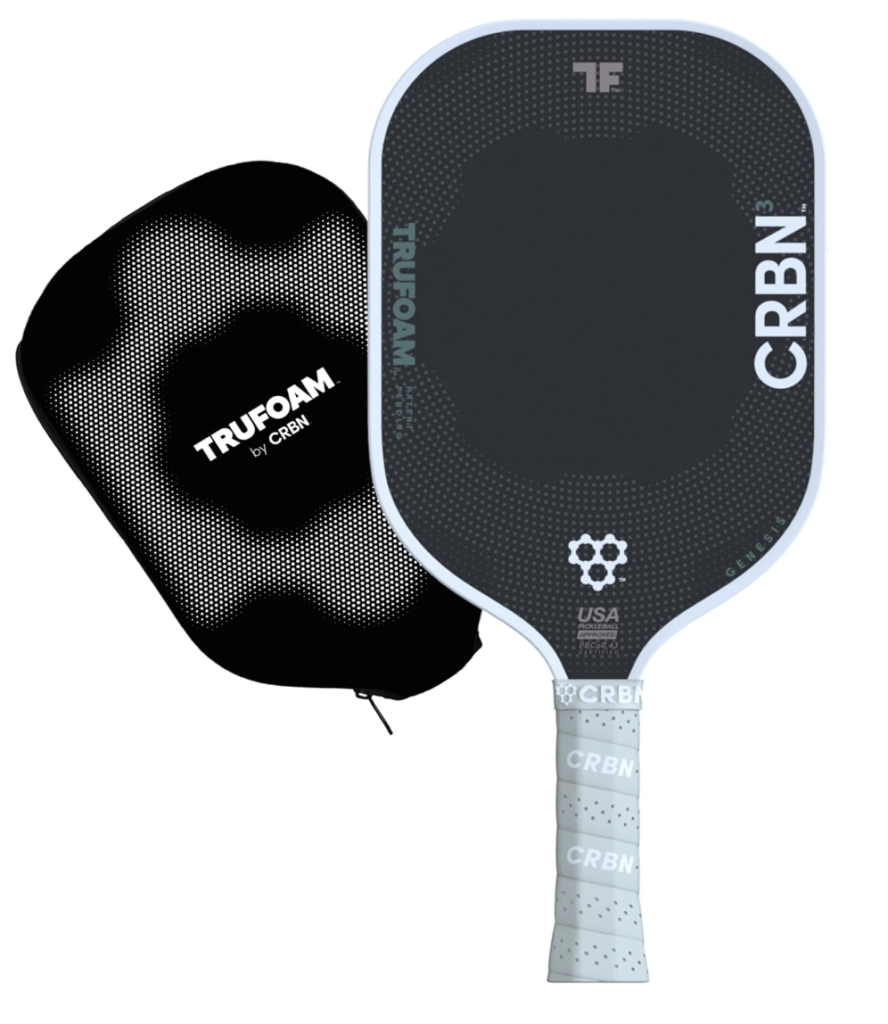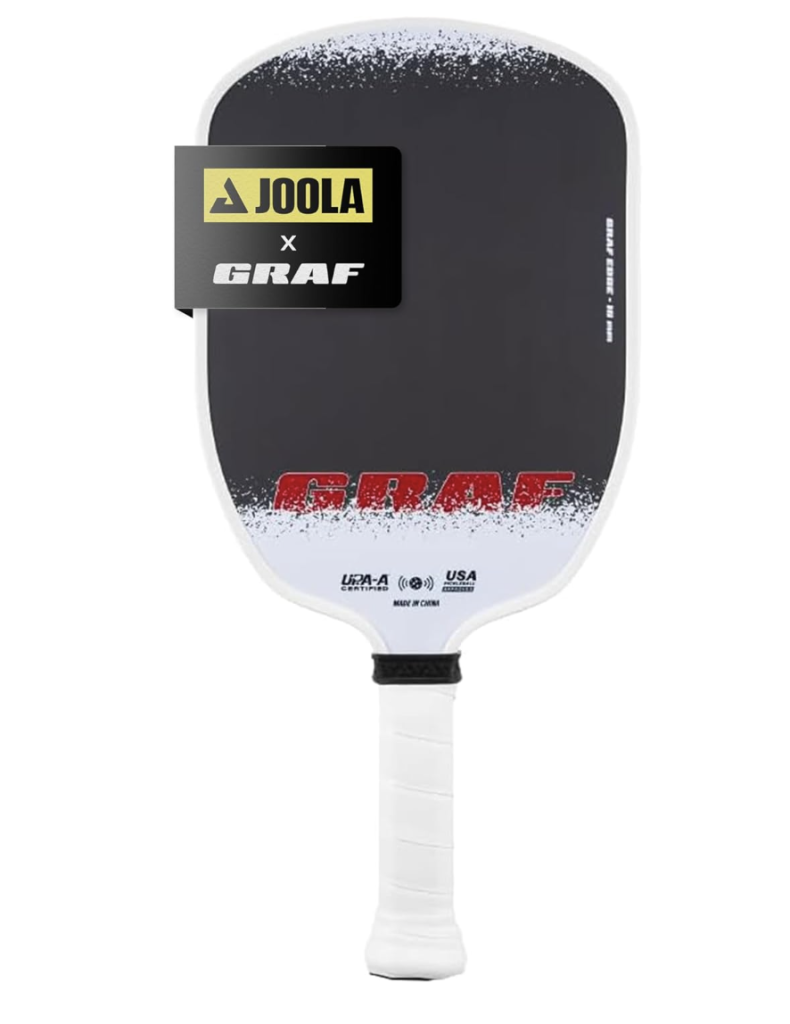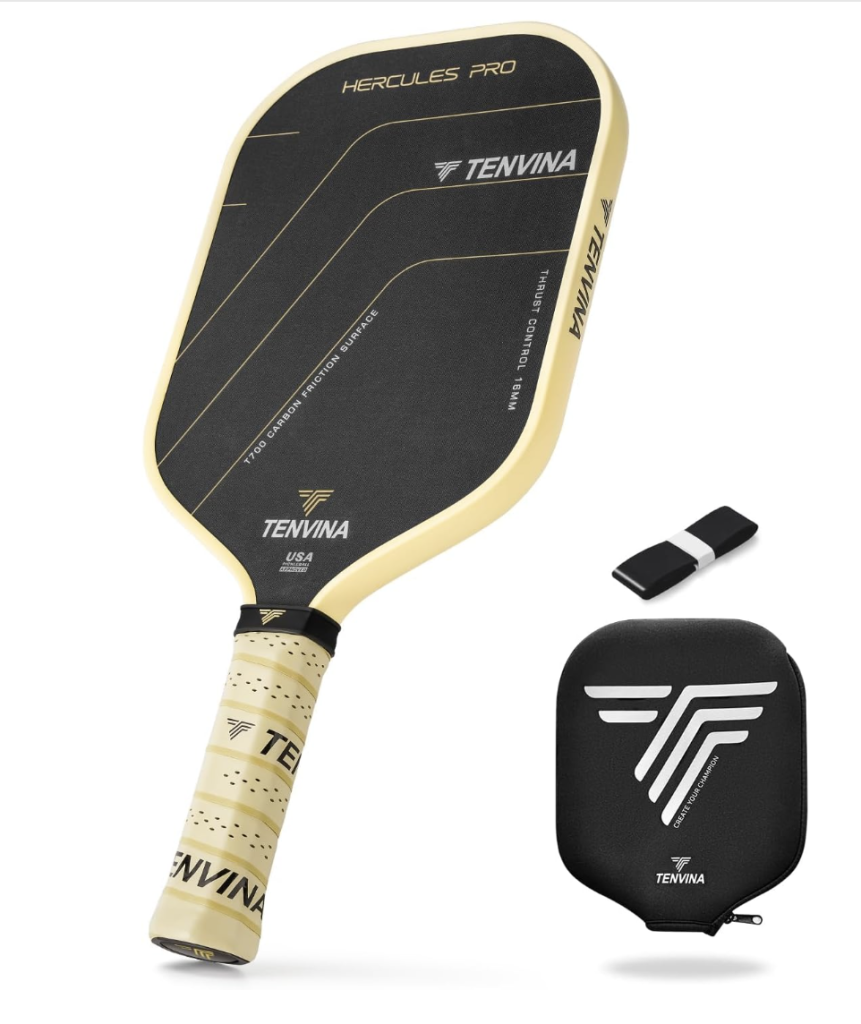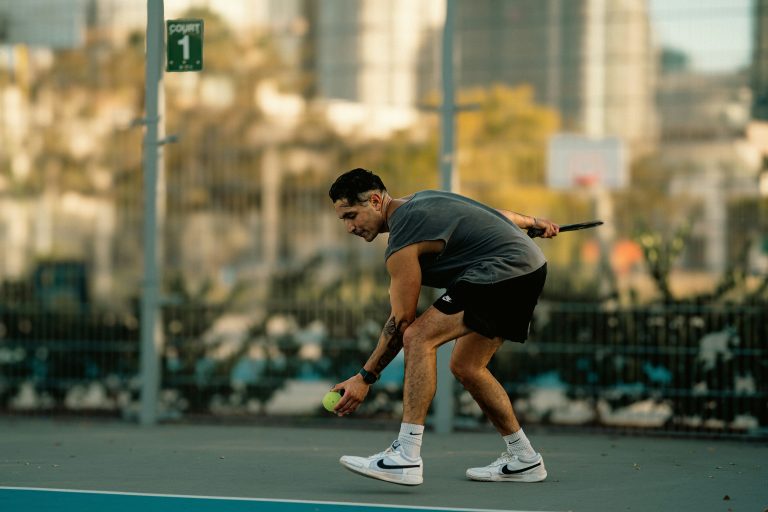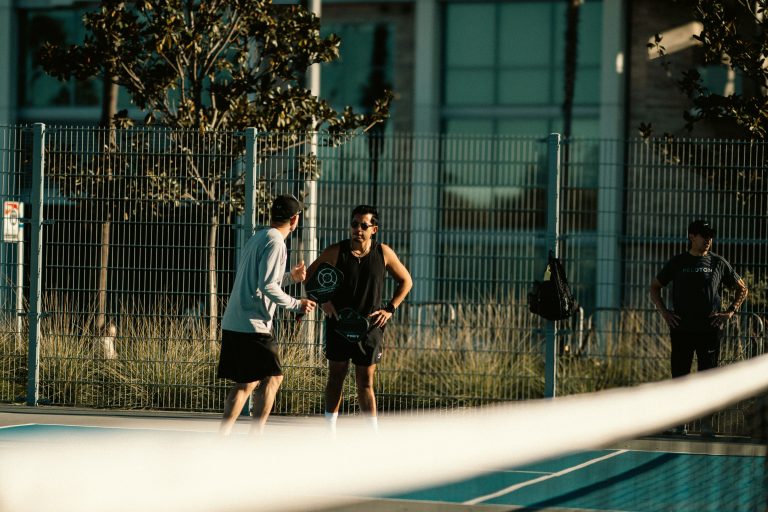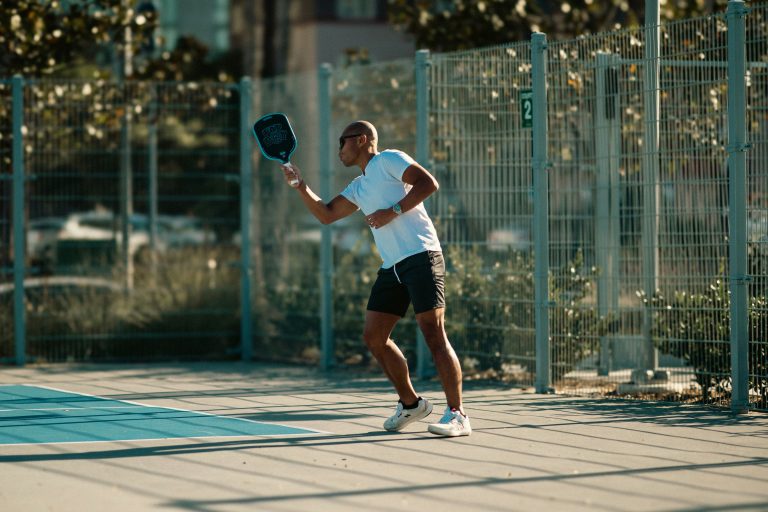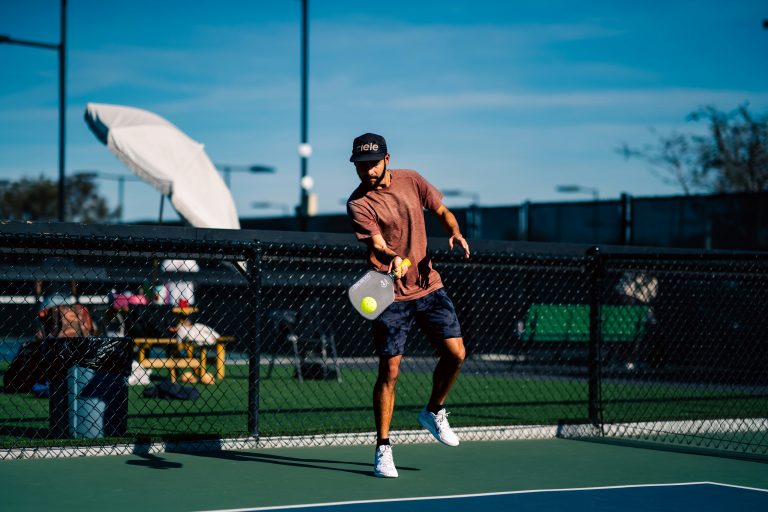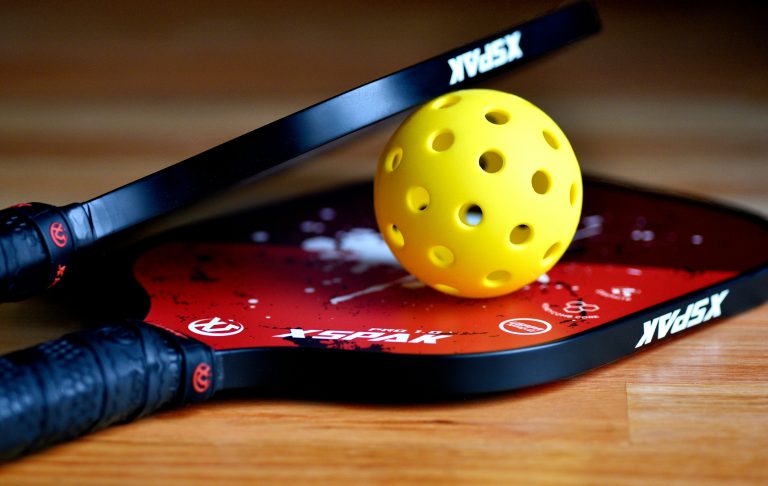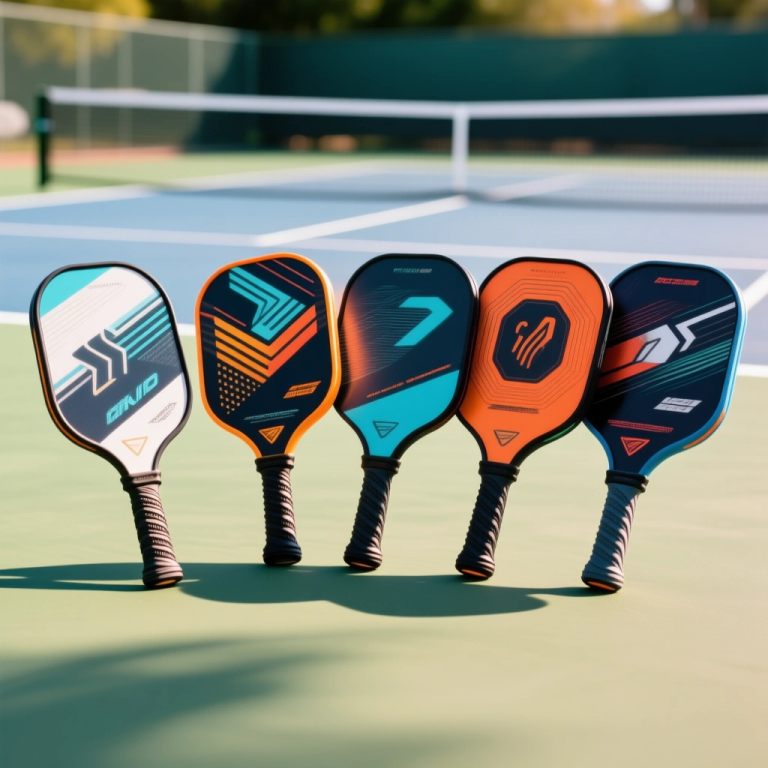Best Pickleball Paddles for Arthritis — Lightweight & Comfort Focused Picks for Joint Relief
Updated October 2025
If you enjoy pickleball but struggle with arthritis, finding the right paddle can make a big difference. You want something lightweight and easy to grip, so your joints don’t feel stiff or sore. Luckily, there are some amazing paddles designed just for you! From the Selkirk Sport SLK Evo to the CRBN TruFoam Genesis, each option helps ease the strain while you play.
Curious about which paddles could bring you comfort and joy on the court? Let’s get right into it!
Selkirk Sport SLK Evo Pickleball Paddles
If you’re looking for a pickleball paddle that can help ease the strain of arthritis while you play, the Selkirk Sport SLK Evo Pickleball Paddles might just be your new best friend. These paddles come in three models, Evo Power, Evo Control, and Evo Hybrid. With a lightweight design and a comfortable grip that absorbs sweat, you’ll feel great even during long matches. The SpinFlex surface gives you better spin and control, making it easier to hit those tricky shots. Just remember, some users reported durability issues, so consider getting a paddle cover for extra protection. Happy playing!
Best For: Beginners or lower end intermediate players who prioritize control and comfort in their pickleball games.
Pros:
- Lightweight design reduces fatigue and enhances shot precision.
- Ultra Comfort Grip absorbs sweat and impacts, providing comfort during extended play.
- SpinFlex Surface improves spin consistency and ball control for better shot making.
Cons:
- Some users reported durability concerns, with paddles showing damage after limited use.
- May not meet the needs of players seeking high power in their shots.
- It’s advisable to purchase a paddle cover for added protection due to delivery damage reports.
CRBN TruFoam Genesis Pickleball Paddle
The CRBN TruFoam Genesis Pickleball Paddle stands out as an excellent choice for players with arthritis, thanks to its unique 100% foam core design that minimizes vibrations during play. This innovative paddle is made of carbon fiber and took 18 months to perfect, ensuring it performs well from day one. With a thickness of 14mm, it offers great control while being lightweight at just 0.33 kilograms. Customers love its power and spin, and it’s suitable for all skill levels. Plus, you’ll appreciate the included neoprene cover for protection. Get ready to enjoy pickleball without the discomfort!
Best For: Players seeking a lightweight, durable, and vibration-minimizing pickleball paddle, especially those with arthritis.
Pros:
- Exceptional 100% foam core design reduces vibrations, enhancing comfort during play.
- Lightweight construction (0.33 kg) allows for easy maneuverability and control.
- Optimized for power and spin, catering to players of all skill levels.
Cons:
- Some users reported minor issues with grip damage upon arrival.
- The paddle may take time for players accustomed to traditional paddles to adapt to its unique feel.
- Limited color options, as it is only available in black.
JOOLA GRAF Edge 16mm Pickleball Paddle
Looking for a paddle that combines power and control, especially if you’re dealing with arthritis? The JOOLA GRAF Edge 16mm Pickleball Paddle might be just what you need! Weighing only 7.8 oz, it’s lightweight, making it easier on your joints. With a textured carbon fiber surface, you can add spin to your shots effortlessly. The expanded sweet spot helps you hit with precision and power, which is great when you’re shifting from tennis. Plus, it’s USAP certified for tournaments! Whether you’re playing casually or aiming for competition, this paddle delivers comfort and performance without breaking the bank.
Best For: The JOOLA GRAF Edge 16mm Pickleball Paddle is best for players of all skill levels looking for a lightweight paddle that offers a balance of power and control, particularly beneficial for those with joint concerns.
Pros:
- Lightweight design (7.8 oz) reduces strain on joints, making it easier to handle.
- Textured carbon fiber surface enhances spin and control for better shot precision.
- Expanded sweet spot provides additional power and accuracy, ideal for transitioning tennis players.
Cons:
- May not offer the same level of durability as heavier paddles for aggressive players.
- Price point might be considered high for those just starting in pickleball.
- Limited color options may not appeal to all aesthetic preferences.
TENVINA Professional Thermoformed Pickleball Paddle
For anyone dealing with arthritis, the TENVINA Professional Thermoformed Pickleball Paddle could be a game changer. Designed with a lightweight, 6.5-ounce frame, this paddle boosts your control and maneuverability. Its unique thermoformed technology, featuring a polymer honeycomb core, creates a larger sweet spot, making every hit feel smooth. You can choose between the elongated THRUST paddle for offense or the wider POISE paddle for defense, catering to different play styles. Plus, with customizable grip lengths, comfort is prioritized. Rated 4.9 out of 5 stars, it’s a trusted choice in the pickleball community, ensuring you can play with confidence!
Best For: Individuals with arthritis seeking a lightweight, high performance pickleball paddle that enhances control and maneuverability.
Pros:
- Lightweight design (6.5 ounces) improves maneuverability and reduces strain on joints.
- Thermoformed technology and polymer honeycomb core create a larger sweet spot for smoother hits.
- Customizable grip lengths ensure comfort for different play styles, accommodating various player preferences.
Cons:
- Higher price point compared to basic paddles may not suit all budgets.
- Limited availability of shapes may not cater to every player’s specific preferences.
- Some users may require time to adjust to the paddle’s unique feel and technology.
Factors to Consider When Choosing a Pickleball Paddle for Arthritis
When you’re picking a pickleball paddle, especially if you have arthritis, there are a few key factors to keep in mind. You’ll want to take into account the weight and balance, as a lighter paddle can help reduce strain on your joints. Don’t forget about grip comfort and the paddle’s material, since these can make a big difference in your overall playing experience!
Weight and Balance
Choosing the right pickleball paddle is like picking the perfect partner for a dance; it needs to feel just right in your hands. When you have arthritis, the weight of the paddle is essential. Lighter paddles, around 6 to 8 ounces, are usually easier on your joints, helping you play longer without discomfort. A well-balanced paddle, with weight evenly distributed, makes it easier to control without straining your wrist or arm. Plus, paddles with a lower swing weight can reduce fatigue, letting you focus on the game instead of your pain. Don’t forget about materials—composite or foam cores can absorb shock, giving your joints a little extra love. So, dance your way to a comfortable game!
Grip Comfort
After you’ve found a paddle that feels just right regarding weight and balance, grip comfort becomes the next big thing to take into account. A comfy grip is essential, especially for players with arthritis. It helps reduce strain, letting you play longer without discomfort. Grip sizes usually range from 4 to 4.5 inches, so finding the right fit can minimize hand fatigue and improve your control on the court. Look for paddles with ultra-comfort grips that absorb sweat and impacts, making them easier on your joints. Plus, lighter paddles can further reduce strain. Don’t forget to reflect on paddles with customizable grip lengths or ergonomic designs to suit your specific needs. Happy playing!
Paddle Material
The right paddle material can make all the difference in your game, especially if you’re dealing with arthritis. Lighter materials like fiberglass or foam are fantastic choices because they reduce strain on your joints, making it easier to swing. If you want something durable, carbon fiber paddles offer stiffness and minimize vibrations, which can help ease your discomfort. Think about the surface, too! Textured fiberglass can enhance grip and spin control without requiring too much effort, perfect for those with limited hand strength. Finally, make sure the paddle’s design suits your grip size and shape, so you can hold it comfortably. A well-chosen paddle can transform your game while keeping your joints happy!
Core Technology
When it comes to pickleball paddles, core technology plays a big role in how the paddle feels and responds during play. If you have arthritis, a paddle with a polymer honeycomb core can be a great choice. This design offers a softer touch and better shock absorption, which helps reduce strain on your joints. Foam core paddles are another option; they’re tough and designed to maintain their shape, giving you consistent performance without sacrificing comfort. Also, keep in mind that thicker cores often provide a softer feel, perfect for easing joint discomfort. With advanced core technology, you’ll enjoy better spin and control, enabling you to play effectively while keeping arthritis symptoms at bay.
Surface Texture
Choosing the right surface texture for your pickleball paddle can make a world of difference, especially if you’re dealing with arthritis. A textured surface helps improve grip and control, which is super important when your hand strength isn’t at its best. Plus, it enhances spin potential, so you can nail those tricky shots without straining too much. On the flip side, smoother surfaces might lead to missed shots, adding frustration to your game. Opting for a paddle with a soft-touch or cushioned texture can also provide extra comfort, easing joint pain during play. Remember, the right texture makes your paddle feel manageable, so you can focus on having fun and playing your best!
Shape and Size
Finding the right shape and size for your pickleball paddle can make a big difference, especially for those dealing with arthritis. Wider paddles give you a larger sweet spot, which can help reduce strain on your wrist and fingers. If you prefer better reach, consider an elongated shape that allows you to hit the ball without overextending your joints. Weight matters too! Lighter paddles, usually between 6 to 9 ounces, are easier to handle, helping you avoid fatigue. Don’t forget grip size! A proper grip, ideally between 4 to 4.5 inches, can prevent unnecessary strain. Remember, a balanced paddle design can enhance your control and power, keeping your game comfortable and enjoyable. So choose wisely!
Final Thoughts
To sum up, picking the right pickleball paddle can make all the difference, especially if you’re dealing with arthritis. The Selkirk Sport SLK Evo and CRBN TruFoam Genesis are great choices for lightweight comfort. Meanwhile, the JOOLA GRAF Edge and TENVINA Professional paddles offer fantastic control and power. Remember, a good paddle not only helps you play better but also keeps your joints happy. So grab one of these paddles, and get ready to enjoy the game with ease and comfort!
FAQ: Best Pickleball Paddles for Arthritis
What type of pickleball paddle is best for arthritis?
Lightweight paddles made from carbon fiber, fiberglass, or foam cores are best. They reduce vibration and joint stress while providing excellent control and comfort for players managing arthritis.
How does paddle weight affect arthritis symptoms?
Heavier paddles can increase wrist and forearm strain. Choosing a paddle under 8 ounces helps reduce impact and fatigue, making play smoother and more comfortable for arthritic hands.
Are thicker paddles better for arthritis?
Yes. Paddles with 16mm or thicker cores absorb more shock and reduce vibration on contact. This can significantly lower discomfort for players with arthritis or tendon sensitivity.
What grip size should I use if I have arthritis?
A medium or slightly larger grip (4.25″–4.5″) helps relieve tension by allowing a relaxed hold. Avoid grips that are too small, as they increase stress on your knuckles and wrist joints.
Are carbon fiber paddles good for joint pain?
Absolutely. Carbon fiber paddles are lightweight, durable, and minimize vibration better than aluminum or composite models—making them ideal for players with arthritis or hand pain.
How do I make my pickleball paddle more arthritis friendly?
Add cushioned overgrip tape, use a vibration dampening glove, and avoid over-tightening your grip. These small adjustments can dramatically improve comfort and reduce joint tension.
What’s the best paddle core for reducing vibration?
A polymer honeycomb or foam core provides the best vibration absorption. Both materials deliver a softer feel, preventing harsh impact feedback that can aggravate arthritis symptoms.
Can arthritis players still play competitively?
Yes! With the right paddle and technique, many players continue competing comfortably. Look for USAP-approved lightweight paddles with soft-touch surfaces and ergonomic grips.
How can I reduce wrist strain while playing pickleball?
Warm up before playing, stretch your forearms, and keep a loose, natural grip. Using a paddle with even weight distribution and a comfortable grip can prevent stiffness and pain.
What are the best brands for arthritis friendly paddles?
Brands like Selkirk, CRBN, JOOLA, and TENVINA consistently produce ergonomic, shock-absorbing paddles. These are trusted for their comfort, vibration control, and quality builds.

